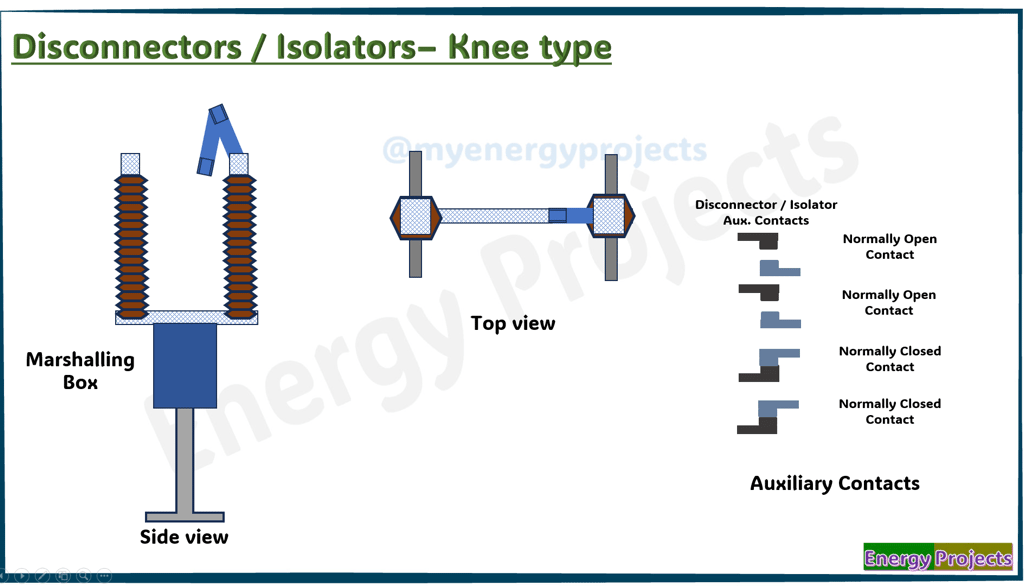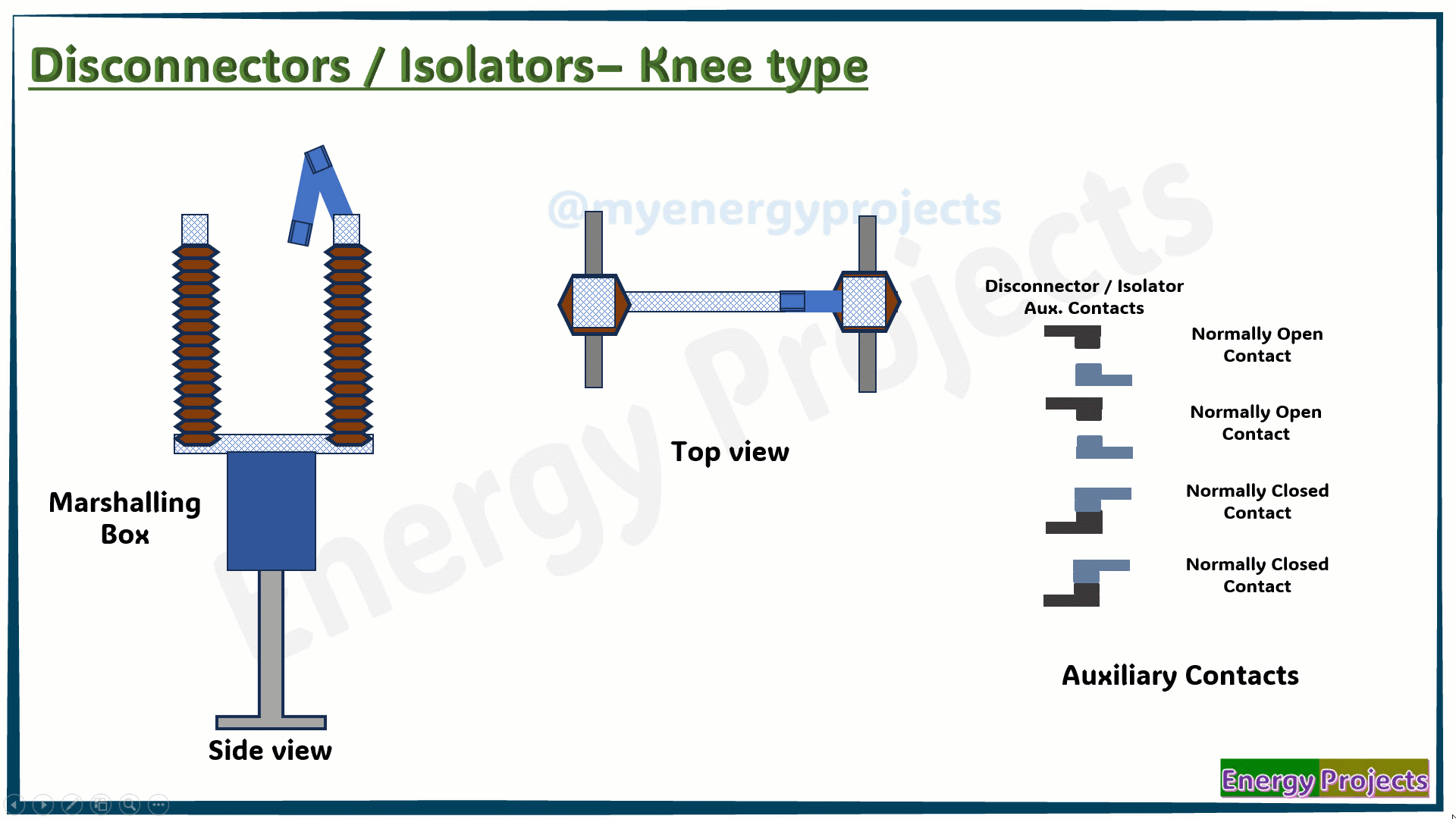06.Knee type Disconnectors
Track Sequence of Engineering
A Knee-Type Disconnector is utilized in high-voltage systems to safely isolate electrical circuits. It features a two-part articulated arm that bends at a “knee” joint during operation, allowing it to pivot and engage or disengage with a fixed contact. This configuration is particularly advantageous in substations with height limitations, providing an efficient and space-saving solution. The design ensures a clearly visible isolation gap for operational safety while maintaining required phase-to-phase and phase-to-ground clearances. Renowned for its robust mechanical performance and ease of maintenance, the Knee-Type Disconnector can be operated either manually or via a motor, depending on system requirements. Its compact footprint and reliable function make it a preferred choice in space-constrained installations.
Advantages
Provides a clearly visible horizontal or angular isolation gap, enhancing operational safety.
Space-efficient design is well-suited for installations with limited vertical clearance.
Compact and symmetrical structure allows flexible installation in various substation layouts.
Mechanically robust and reliable, with straightforward operation and maintenance.
Ideal for outdoor high-voltage applications due to good electrical clearances and minimal height requirement.
Disadvantages
Requires adequate horizontal space for the pivoting motion, which may restrict use in narrow layouts.
The moving joint and exposed components are subject to environmental wear over time.
Precise mechanical coordination is needed for proper contact alignment and secure operation.
Must be operated only when the circuit is fully de-energized, as it is not designed to interrupt load or fault current.
Operation:
The Knee-Type Disconnector operates through a two-part articulated arm that bends at a joint, allowing the moving contact to pivot away from the fixed contact and interrupt the circuit. It must only be operated when the circuit is de-energized to ensure safe isolation. Please note that the disconnector moves in a horizontal or angular path during operation, utilizing its “knee” mechanism for compact movement within limited vertical space.
Auxiliary Contacts :
Auxiliary contacts are secondary switching contacts used in conjunction with primary switching devices like disconnectors or circuit breakers. They provide status signals (open or closed) to control systems or indicator panels. These contacts do not carry load current but help in automation and monitoring. They are essential for interlocking, safety logic, and remote supervision. The number of NC, NO , NOC ,NCO depends based on the specific requiremnets. You can see the operation of the Auxiliary contacts .




